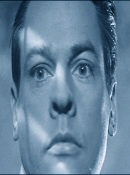

 |
 |
 |
 |
 |
 |
 |
 |
 |
 |

Instructor
|
Class Meets
|
Office Hours
|
Office
Location
|
Phone/Voice
Mail
|
Email
|

Final Essay
Length and Due Dates
Length: 4-5
pages, double-spaced, titled, and paginated, with one-inch margins
In-Class Draft:
Wednesday, December 10; class meets
in Mary Gates 044
Optional Draft
Conference:
Individually scheduled from December 12-15
Revised Draft:
Tuesday, December 16, by 5:00 p.m. in hard copy at Padelford A-305 or via E-Submit
Assignment
For the final essay, you may compare any two films from the following list: Invasion of the Body Snatchers, Dr. Strangelove, Easy Rider, The Deer Hunter, Do the Right Thing, and Fight Club. Your comparison
must address one of the questions below.
1) Several of the films screened since the fifth week have attempted to
critique particular ideologies or practices. Compare and contrast
the critiques offered by any two of the films listed above. How
do the films convey their critiques? What is the significance of
the similarities and differences in the films' approaches and
conclusions? Why do the films level the critiques they do?
2) Compare and contrast two films' construction of
masculinity. What do the films communicate about the roles men
should fulfill and shun? Do the films present a monolithic view
of masculinity, or do they explore ideological tensions?
3) Compare and contrast the ways in which two of the listed
films articulate national identity. What defines characters as
“American”?
What symbols and icons are associated with “Americanness”? Do the
films convey a unified vision of American identity, or are particular
visions in conflict?
4) In several of the films we have screened, the small town or
the way of life it represents is under threat. Compare and
contrast the threats presented to the small town or small-town way of
life in two of the listed films. What is the nature and
significance of the threat?
Guidelines
1) Although I have provided questions, you will need to develop an
angle of comparison/contrast. For example, one could approach
the national identity question in terms of the loss of traditional
American identity, the struggle to define identity in times of national
crisis, or the conflict between two visions of American identity.
2) Effective comparison/contrast essays highlight how similarities and
differences reveal something important about each film. As you
develop your essay, consider how each film “unlocks” the other.
Think about how far you can take your argument when you make particular
choices. For example, an essay on two films' ideological
critiques will be more effective if you select films that address
similar ideological territory. Otherwise, you may not be able to
explore the significance of the films' connections. Ask yourself
why it is important to examine these films together in
terms of ideology.
3) Rather than offering a catalogue of your observations regarding the
films’ similarities and differences, your essay should pose an argument
about the significance of the connection. Your thesis should not
simply state that “films X and Y treat ideology Z similarly and
differently.”
4) While you can organize your comparison/contrast essay in several
ways, you should avoid discussing one film in full, then turning to the
other. This format relegates the comparison/contrast to the
second half of the paper. Instead, you can structure the first
part of the body around similarities, moving from one film to the
other, and the second part around differences, discussing each film in
turn. You can also focus each paragraph on one similarity or
difference, discussing examples from both films.
5) Although the comparison/contrast essay examines large-scale
ideologies, close textual analysis will serve as your main source of
evidence. In supporting your argument, you will need to pay
attention to how the films code ideology through narrative and/or
cinematic techniques. Focus on specific shots or scenes and the
narrative and cinematic codes at work in those shots or scenes.
You may also refer to readings from the packet as they help you to
develop your analysis.
6) Remember that you are writing to an audience who has already viewed
the films. Therefore, your essay should not offer plot
summaries. Instead, any reference to the films—dialogue
quotations, scene descriptions, explanations of narrative
movement—should support your analysis.
Grading
Follow the link for final essay grading
criteria. Generally speaking, successful essays will have a
substantive, defendable thesis, a logical pattern of development,
detailed support for all arguments, and a sophisticated, grammatically
correct writing style.
Page Last Updated 12/9/03
Email Questions and
Comments
Home | Reqs | Traces
| Essays | Discuss
|